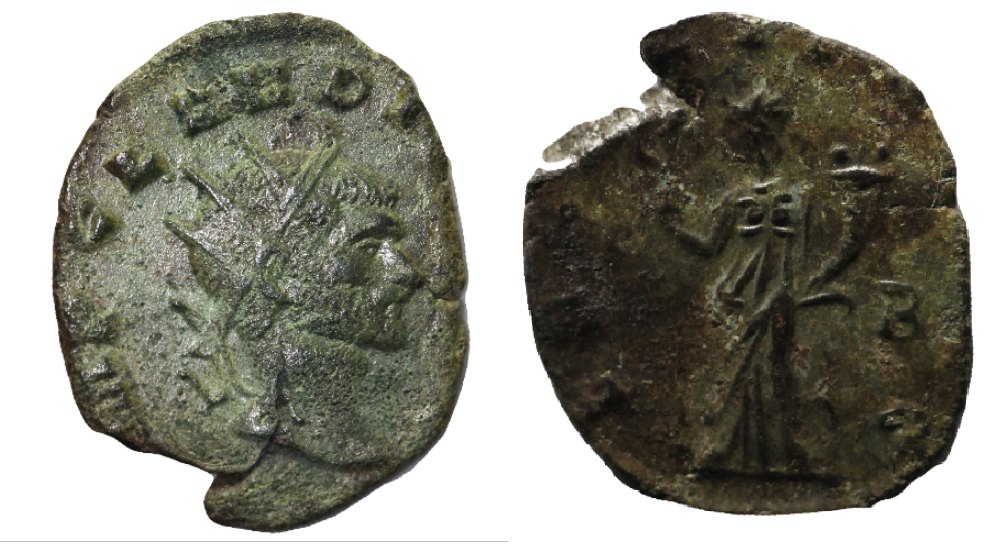May 10, 2015, by Will Leveritt
On this day in AD 214 the emperor Claudius II Gothicus was born
Text by Lauren Shelton
Image © Mint Imperials
Claudius II Gothicus was born 10th May, AD 214 in Dardania, Moesia Superior. He became emperor in 268 and, whilst he ruled for only two short years, he became well known for his military success against a Gothic invasion.

AE antoninianus of Claudius II Gothicus, 268-70. Obverse shows the emperor radiate, IMP CLAVDIVS AVG. Reverse shows Felicitas standing with cornucopia and caduceus, B in right field, FELICITAS AVG. 20mm, 2.34g, 7 o’clock.
Before coming to the throne, Claudius served as a military officer under the emperor Gallienus (260-68), a time during which Rome was under threat from many invading tribes. In 268, Claudius was in command of Gallienus’ cavalry during the revolt of Aureolus in Italy, when the emperor was assassinated by his troops.
As Claudius was said to have been named heir whilst the Emperor was on his deathbed, there is some speculation that he himself was involved in the assassination. Whether this is true or not, Claudius insisted on the deification of Gallienus and was also keen to complete the former emperor’s campaign against Aureolus’, whose revolt was put down swiftly; after his defeat Aureolus was murdered by his own troops.
Claudius had next to turn his attention to defeating the Alemanni, a Germanic tribe, who had been invited to invade Italy by Aureolus. After some initial setbacks, Claudius acted swiftly in strengthening his army through the replacement of many officers and soldiers. Through this reshuffling of the army, Claudius was able to gain a resounding victory against the Alemanni, driving them from Italy and earning himself the title Germanicus Maximus.
In the following year of 269, Claudius led his most famous campaign; that against the Goths. Amassing a force apparently 320,000 men strong, the Gothic army first attacked along the coast of the Black Sea, before moving into the Aegean and besieging Thessalonica.
This prompted Claudius to set out from Rome with his armies. In response to this, the Gothic force split into two, the larger portion travelling on land to the Danube, whilst a secondary force continued the naval assaults on the coastal cities of the Aegean.
Sending the commander of his cavalry, Aurelian, to Macedonia to protect Illyria, Claudius and his troops blocked the route to the Danube. He then met the Goths in battle at Naissus in Moesia, which was an overwhelming victory for the Romans, as the Gothic forces lost 50,000 of their men.
With a further 3,000 men being lost to Aurelian in Macedonia, the Gothic War came swiftly to a close after several more Roman victories. Claudius was given the title Gothicus for his victory, which was key in bringing some stability to Rome during a time of such threat.
In the year 270, Claudius had just began preparations for a campaign against another invading army, this time the Vandals, when he at died at the age of 56 after catching the plague. Despite having been emperor for only two years, he appears to have been much respected and beloved, with him being immediately deified after his death and a golden statue being erected in his honour outside the great temple of Jupiter Optimus Maximus. He was succeeded by his cavalry commander, Aurelian.
No comments yet, fill out a comment to be the first

Leave a Reply